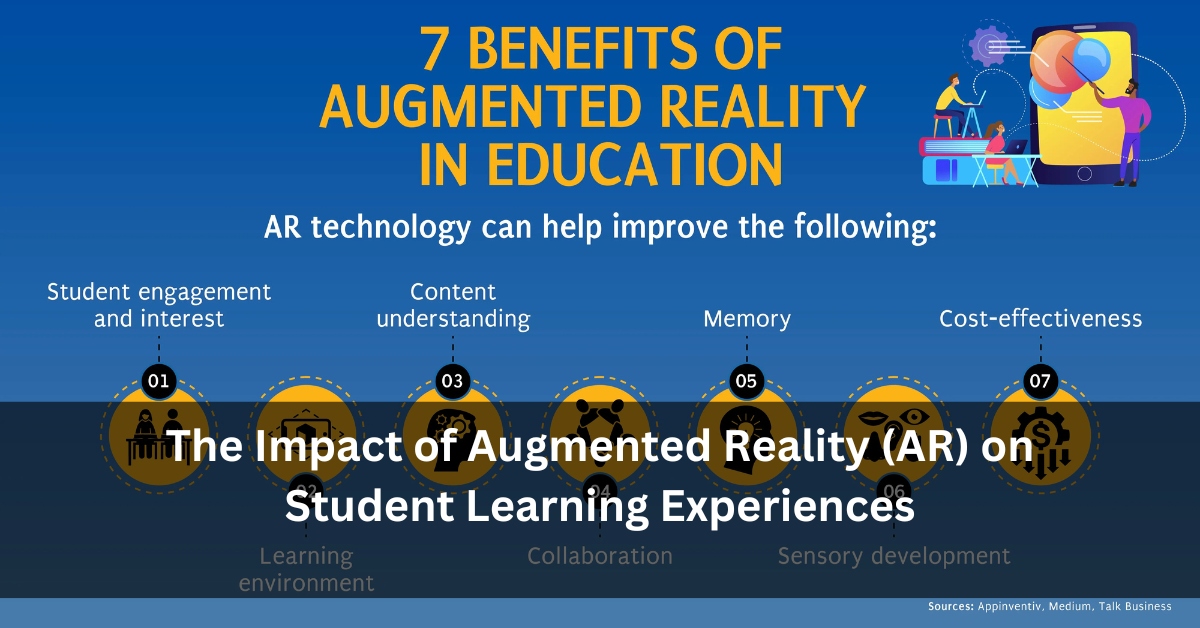The Impact of Augmented Reality (AR) on Student Learning Experiences
Technology is changing the face of education faster than ever before. One major shift we’re seeing in Indian classrooms in 2025 is the use of Augmented Reality (AR). It’s turning traditional blackboards into interactive learning zones where students don’t just read—they see, interact, and experience.
This article from Blog Lovin will help you understand what AR in education means, how it works, why schools are adopting it, and what Indian students are gaining from it.
What is Augmented Reality (AR)?
Simply put, Augmented Reality (AR) is a technology that adds digital elements—like 3D models, sounds, or animations—on top of real-world settings. So instead of just reading about the solar system, students can see planets orbit around the sun in real time through a tablet or mobile phone.
It blends real-life learning with exciting digital visuals, helping students grasp concepts much faster and more effectively.
Why Indian Schools are Embracing AR
In India, AR is no longer limited to private or elite institutions. Schools across different states are now exploring affordable AR solutions for better learning outcomes.
Here are a few examples:
- Tamil Nadu: Schools in Coimbatore have introduced AR/VR labs where students can conduct science experiments in virtual environments—no real chemicals needed!
- Delhi: Edtech startups are partnering with government schools to provide AR-based history lessons, helping children visualize historical events like the freedom struggle.
- Maharashtra & Karnataka: Tech-integrated classrooms are helping teachers explain complex maths and biology concepts using AR apps.
Real Benefits of AR for Students
Let’s look at how AR is actually helping students inside classrooms:
1. Better Understanding of Subjects
Whether it’s a working model of the human heart or the structure of an atom, students can now see everything in 3D. This makes difficult topics easier to understand and remember.
2. Increased Student Engagement
When students are part of the lesson—literally—they pay more attention. AR keeps their minds active and focused, especially in subjects they used to find boring.
3. Improves Learning for All Types of Students
Every student learns differently. Some understand by listening, some by seeing. AR gives visual and interactive support, helping even slow learners catch up.
4. Safe and Cost-effective Experiments
In science labs, AR can replace expensive or risky experiments. For example, a chemistry explosion or a biology dissection can be safely simulated using AR tools.
How Teachers Are Using AR in the Classroom
- Maths teachers are showing 3D shapes that students can rotate and measure.
- History teachers are using AR maps to explain battles and timelines.
- Science teachers are giving biology lessons with AR models of organs and ecosystems.
- Even language classes are using AR flashcards to teach new words and meanings.
Teachers say that AR not only improves student results but also makes their own job easier and more enjoyable.
What Do You Need to Use AR in Schools?
You don’t need heavy computers or smartboards. Even a simple smartphone or tablet with the right app can bring AR to your classroom. There are many affordable or even free AR apps available today that schools can easily access.
Some popular tools include:
- Quiver
- Google Expeditions (now part of Google Arts & Culture)
- Merge Cube
- Assemblr EDU
These apps work offline and are suitable for rural and low-budget schools as well.
Challenges to Overcome
While AR has many advantages, a few things still need to improve:
- Device Access: Not all students have smartphones or tablets.
- Teacher Training: Many teachers are not yet comfortable with using new technology.
- Content Availability: More regional language content needs to be developed to reach every student in India.
With growing support from the government and private sector, these challenges are slowly being tackled.
The Future of AR in Indian Education
Experts believe that AR will soon become a must-have tool in all schools, just like projectors or computers. Edtech companies are working on affordable kits for rural schools, and more teachers are being trained.
We can expect:
- Personalized learning paths for each student
- Augmented textbooks with QR codes that unlock 3D content
- AR field trips to historical places or science labs—without leaving the classroom
Final Thoughts from Blog Lovin
AR is not just a trend—it’s a powerful tool that is reshaping how students learn in India. By making education more fun, visual, and interactive, it is preparing the next generation for a tech-driven future.
As we move forward, AR will help bridge the learning gap between urban and rural India, making quality education accessible to all.
✅ Are you a parent or teacher looking for smart learning tips?
✅ Want to know which schools or apps are using AR near you?
✅ Curious about how AR can help your child in board exams?
Keep following Blog Lovin for daily updates and guides on the latest in education across India.







